A Zero-killer Stuka~
Chance Vought F4U Corsair
The Vought F4U Corsair, a name synonymous with power, innovation, and decisive air superiority, remains one of the most iconic and recognizable aircraft of World War II. A single-engine, gull-winged fighter renowned for its speed, ruggedness, and deadly firepower, the Corsair carved its legend primarily in the Pacific Theater, becoming a terror to Japanese pilots and earning the respect of its Allied counterparts. Designed and initially manufactured by Chance Vought, the Corsair was soon in great demand; additional production contracts were given to Goodyear, whose Corsairs were designated FG, and Brewster, designated F3A.
Development and Design:
Born from a 1938 US Navy specification calling for a high-performance carrier-based fighter, the Corsair was a radical departure from contemporary designs. The Vought Aircraft Industries team, led by Rex Beisel, embraced innovation to meet the demanding requirements of speed, climb rate, and carrier compatibility. The result was a truly groundbreaking design that pushed the boundaries of aviation technology.
The most striking feature of the Corsair was its inverted gull wing. This design was directly driven by the massive Pratt & Whitney R-2800 Double Wasp radial engine that powered the aircraft. The engine, producing a staggering 2,000 horsepower (later versions even more), required a large diameter propeller – initially a 13-foot 4-inch Curtiss Electric propeller. To provide adequate ground clearance for the propeller while keeping the landing gear struts short and strong for carrier operations, the gull wing was the elegant solution. The wing folded upwards near the fuselage, reducing its footprint on carrier decks.
The airframe was constructed primarily of aluminum alloy, with a semi-monocoque design providing a strong yet relatively lightweight structure. Pilot protection was incorporated through armor plating and self-sealing fuel tanks, increasing survivability in combat. Armament initially consisted of six .50 caliber (12.7 mm) Browning M2 machine guns, three mounted in each wing, providing overwhelming firepower against enemy aircraft. Later versions were capable of carrying rockets and bombs, adding ground attack capabilities to its arsenal.
Despite its impressive potential, the Corsair initially faced challenges integrating into carrier operations. Problems with carrier landings, attributed to limited pilot visibility over the long nose and a tendency to bounce on landing, led to the Navy initially relegating the Corsair to land-based Marine Corps squadrons.
This seemingly minor setback proved to be a turning point. The Marines, operating Corsairs from land bases on islands across the Pacific, unleashed the aircraft's full potential. They honed their skills in island-hopping campaigns, perfecting the Corsair's capabilities in dogfights and ground attack missions. The Corsair quickly established a dominant air superiority over the Japanese, contributing significantly to the Allied advance. Eventually, improvements were made to the Corsair's landing characteristics, and the Navy successfully integrated it into carrier operations later in the war.
The Corsair quickly earned a fearsome reputation among Japanese pilots. Its superior speed, climb rate, and firepower often gave it a decisive advantage in aerial combat. The aircraft became a key element in securing air superiority over vital strategic locations, crippling Japanese supply lines, and providing crucial support for ground troops. Corsair pilots achieved impressive kill ratios, cementing the aircraft's place in aviation history. Its rugged construction also allowed it to withstand considerable damage and still return to base, further enhancing its survivability.
Beyond air-to-air combat, the Corsair proved to be a highly effective ground attack aircraft. Its ability to carry rockets and bombs allowed it to destroy enemy fortifications, vehicles, and shipping, contributing significantly to the destruction of Japanese infrastructure and war-making capabilities.
The Corsair continued to serve with distinction in the Korean War, primarily in the ground attack role, providing close air support for United Nations forces. It was eventually phased out of US military service in the 1950s, but continued to operate with other air forces for several more years, a testament to its enduring design and capabilities.
Beyond the Specs: The Corsair's Impact:
The Vought F4U Corsair was more than just a collection of impressive specifications. It was a symbol of American ingenuity, combat prowess, and the relentless pursuit of air superiority. Its iconic silhouette, highlighted by the distinctive gull wing, remains instantly recognizable and evokes the spirit of WWII aviation. The Corsair's legacy extends beyond its combat record. It influenced aircraft design and development for years to come, highlighting the importance of powerful engines, streamlined aerodynamics, and robust construction.
Possible Aircraft Nicknames
Analyzing forum discussions surrounding the Vought F4U Corsair reveals a variety of nicknames, both officially sanctioned and those born from the experiences and anecdotes of pilots and enthusiasts:
"Whistling Death": This is perhaps the most famous and widely circulated nickname for the Corsair. It originated from the distinctive high-pitched whistling sound produced by the air rushing through the oil cooler intakes during dives. Japanese pilots often referred to the Corsair as "Whistling Death" due to the terrifying sound preceding its attack. Forums often debate the accuracy of the translation from Japanese, but the association remains strong.
"Hose-Nose": A more informal nickname, "Hose-Nose" refers to the Corsair's long, prominent nose which housed the powerful engine and associated systems. This term is often found in discussions about the aircraft's handling characteristics and pilot visibility.
"Bent-Wing Bird": A straightforward and descriptive nickname referring to the distinctive gull wing design. Forum users often use this term in technical discussions about the wing's aerodynamic properties and structural challenges.
"Ensign Eliminator": This darker, more cynical nickname, sometimes found in historical forums, alludes to the initial high accident rate during carrier trials. It reflects the challenges faced during the Corsair's early development and adaptation to carrier operations. Important to note that this nickname isn't always used respectfully and its usage often sparks debate on the accuracy of the claim.
"U-Bird": A simple abbreviation of the "F4U" designation, sometimes used conversationally within online communities dedicated to vintage aircraft.
"The Great Iron Bird": A forum user-created name. More heroic and romantic sounding, possibly after reading a historical fiction or some stories about the Corsair.
"Marine's Ace": While not a common nickname for the plane, forums often contain discussions around what plane can be called a "Marine's Ace" in comparison with other Marines-flown fighter plane.
- About the variant
F4U-1D (Corsair Mk.II (F.2) for RNFAA)
This variant was introduced in April 1944, and was built in parallel with the F4U-1C. It had the new R-2800-8W Double Wasp engine equipped with water injection. This change gave the aircraft up to 250 hp (190 kW) more power, which, in turn, increased performance. Speed was increased from 417 to 425 mph (671 to 684 km/h). Due to the U.S. Navy's need for fighter-bombers, it had a payload of rockets (double the -1A's) carried on permanent launching rails, as well as twin pylons for bombs or drop tanks. These modifications caused extra drag, but the additional fuel carried by the two drop tanks would still allow the aircraft to fly relatively long missions despite heavy, un-aerodynamic loads. A single piece "blown" clear-view canopy was adopted as standard equipment for the -1D model, and all later F4U production aircraft. 150 F4U-1D were delivered to the Fleet Air Arm.
C O N T R O L S
Trim : Flaps, cruising 'rotate' adjuster
VTOL : Further flaps
AG.1 : Arresting hook
AG.8 : Wing folding
Specifications
General Characteristics
- Created On Android
- Wingspan 33.4ft (10.2m)
- Length 28.4ft (8.6m)
- Height 12.5ft (3.8m)
- Empty Weight 4,252lbs (1,928kg)
- Loaded Weight 7,881lbs (3,574kg)
Performance
- Horse Power/Weight Ratio 0.279
- Wing Loading 16.1lbs/ft2 (78.6kg/m2)
- Wing Area 489.8ft2 (45.5m2)
- Drag Points 2105
Parts
- Number of Parts 70
- Control Surfaces 9
- Performance Cost 571

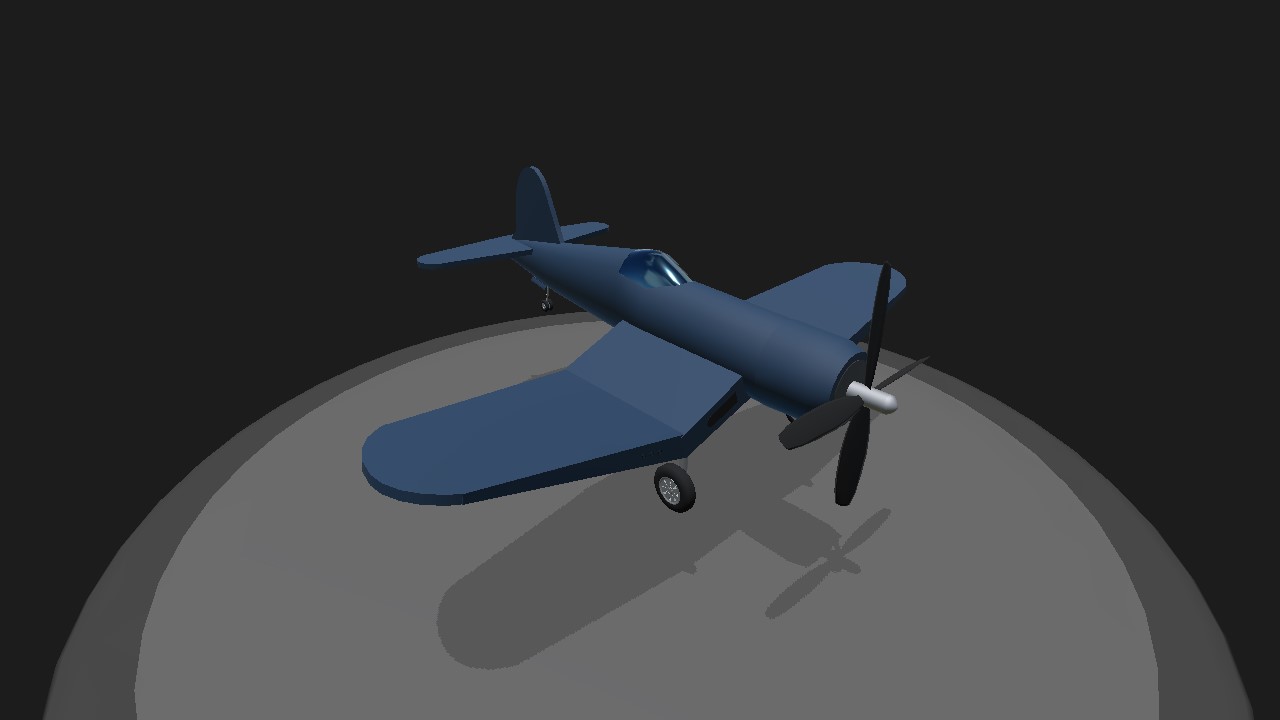
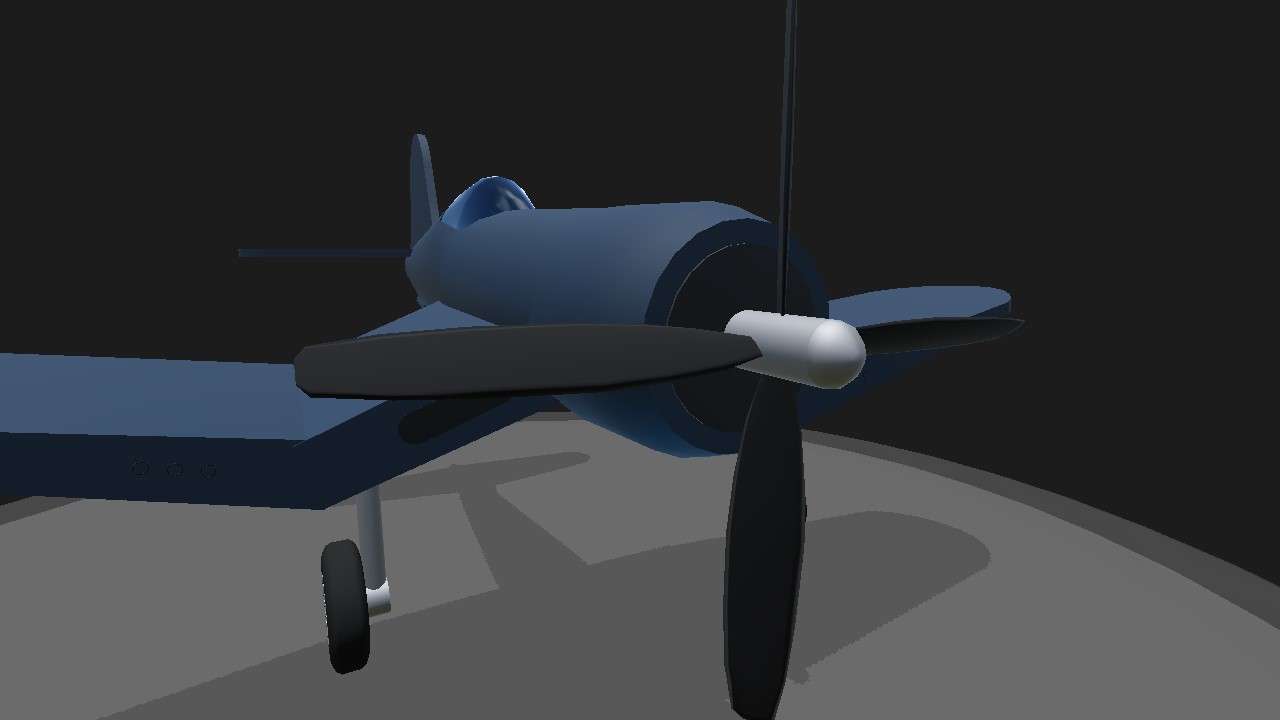
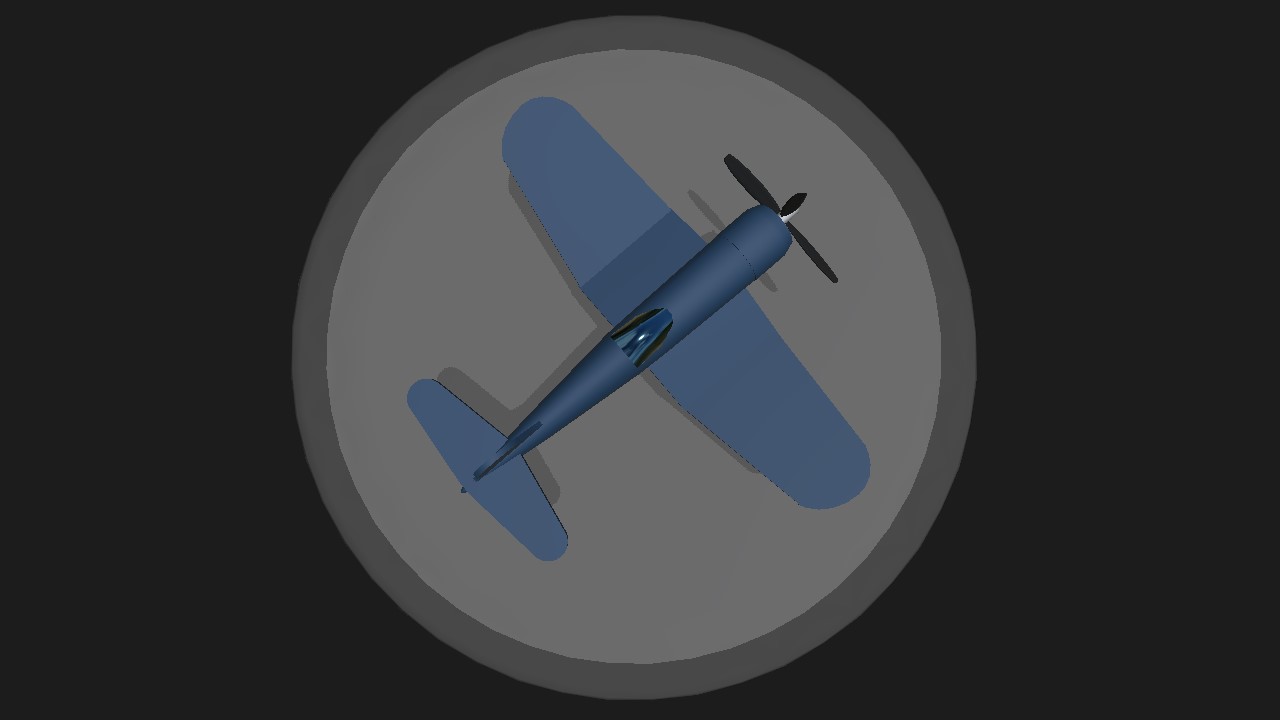
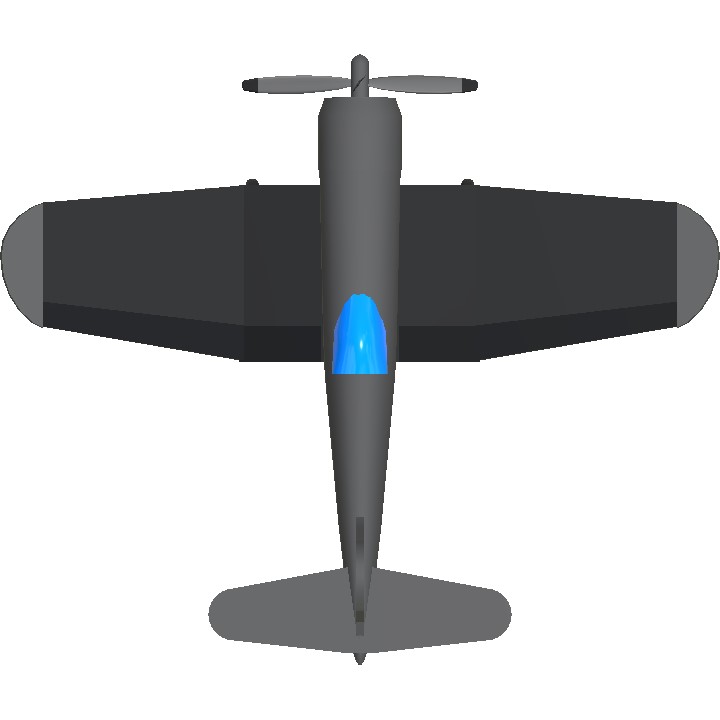
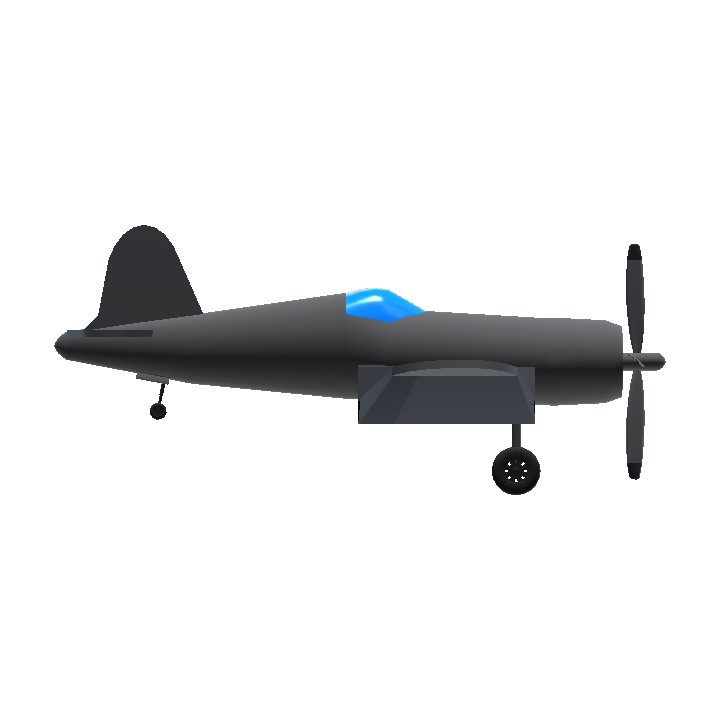
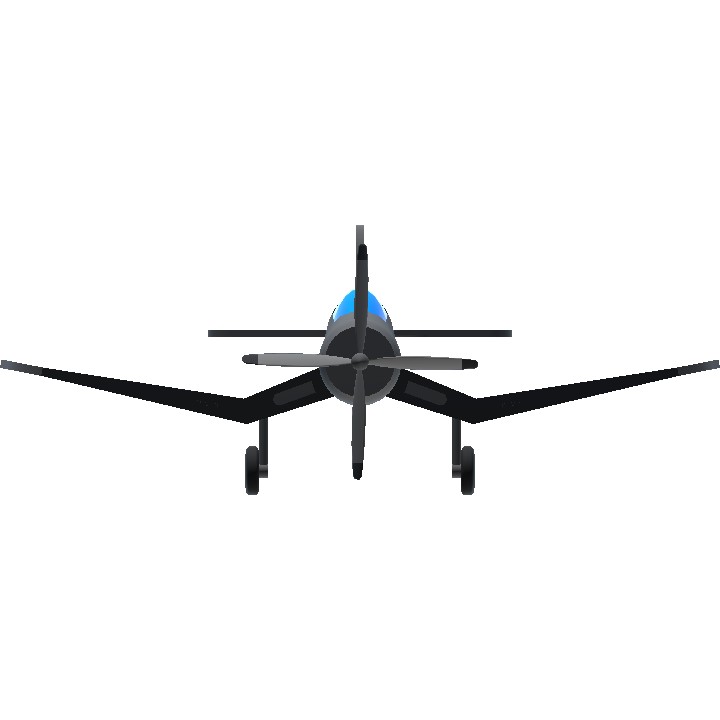
Who sold a plane of temu for 10 bucks bec this looks like one also good plane